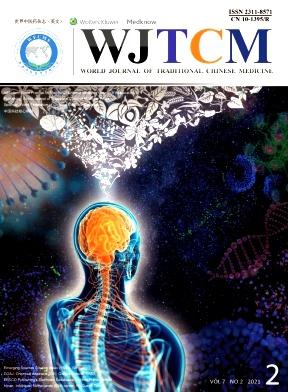Integrated miRNA and mRNA analysis identified potential mechanisms and targets of qianggan extracts in preventing nonalcoholic steatohepatitis
IF 3.2
3区 医学
Q1 INTEGRATIVE & COMPLEMENTARY MEDICINE
引用次数: 1
Abstract
Objective: Qianggan (QG) extract is a patented traditional Chinese medicine that has been widely used for the clinical treatment of nonalcoholic steatohepatitis (NASH). However, its mechanism remains unclear. Methods: The efficacy of QG was evaluated in mice with methionine-and-choline-deficient diet-induced NASH by measuring serum alanine aminotransferase, aspartate aminotransferase, and alkaline phosphatase levels and by H and E staining of liver sections. Microarray and bioinformatics analyses were performed to obtain hepatic microRNA (miRNA) and mRNA expression profiles and to mine potential mechanisms and therapeutic targets. Furthermore, representative miRNA and mRNA expression levels were validated by quantitative real-time polymerase chain reaction (qRT-PCR). Results: QG extract significantly improved NASH. Twelve differentially expressed miRNAs and 1124 differentially changed mRNAs were identified as potential targets of QG extract. Integrated analysis detected 976 miRNA–mRNA regulatory pairs, and networks including 11 miRNAs and 427 mRNAs were constructed by Cytoscape. Hub nodes including miR-7050-5p, miR-212-3p, Bcl2l11, and Kras were filtered out. Gene Ontology and Kyoto Encyclopedia of Genes and Genomes pathway analyses revealed that 427 mRNAs were enriched in pathways including apoptotic process, immune response, FoxO signaling pathway, and natural killer cell-mediated cytotoxicity. We also constructed a protein–protein interaction network with 254 nodes, and identified hub genes including Kras, Fasl, and Ncam1. Finally, the results of qRT-PCR were in good accordance with microarray data. Conclusion: This study identified important hub miRNAs and mRNAs involved in the mechanism of QG extract and which might provide potential therapeutic targets for patients with NASH.综合miRNA和mRNA分析确定了强肝提取物预防非酒精性脂肪性肝炎的潜在机制和靶点
目的:强肝提取物是一种获得专利的中药,已广泛应用于非酒精性脂肪性肝炎的临床治疗。然而,其机制尚不清楚。方法:通过测定血清丙氨酸氨基转移酶、天冬氨酸氨基转移酶和碱性磷酸酶水平以及肝切片的H和E染色,评估QG在蛋氨酸和胆碱缺乏饮食诱导的NASH小鼠中的疗效。进行微阵列和生物信息学分析以获得肝脏微小RNA(miRNA)和mRNA表达谱,并挖掘潜在的机制和治疗靶点。此外,通过定量实时聚合酶链反应(qRT-PCR)验证了具有代表性的miRNA和mRNA表达水平。结果:QG提取物显著改善NASH。12个差异表达的miRNA和1124个差异变化的mRNA被鉴定为QG提取物的潜在靶标。综合分析检测到976个miRNA-mRNA调控对,Cytoscape构建了包括11个miRNA和427个mRNA的网络。滤出包括miR-7050-5p、miR-212-3p、Bcl2l11和Kras在内的枢纽节点。Gene Ontology和Kyoto Encyclopedia of Genes and Genomes通路分析显示,427个信使核糖核酸在包括凋亡过程、免疫反应、FoxO信号通路和自然杀伤细胞介导的细胞毒性在内的通路中富集。我们还构建了一个包含254个节点的蛋白质-蛋白质相互作用网络,并鉴定了包括Kras、Fasl和Ncam1在内的枢纽基因。最后,qRT-PCR结果与微阵列数据基本一致。结论:本研究确定了参与QG提取物机制的重要枢纽miRNA和mRNA,可能为NASH患者提供潜在的治疗靶点。
本文章由计算机程序翻译,如有差异,请以英文原文为准。
求助全文
约1分钟内获得全文
求助全文
来源期刊

World Journal of Traditional Chinese Medicine
Medicine-Complementary and Alternative Medicine
CiteScore
5.40
自引率
2.30%
发文量
259
审稿时长
24 weeks
 求助内容:
求助内容: 应助结果提醒方式:
应助结果提醒方式:


